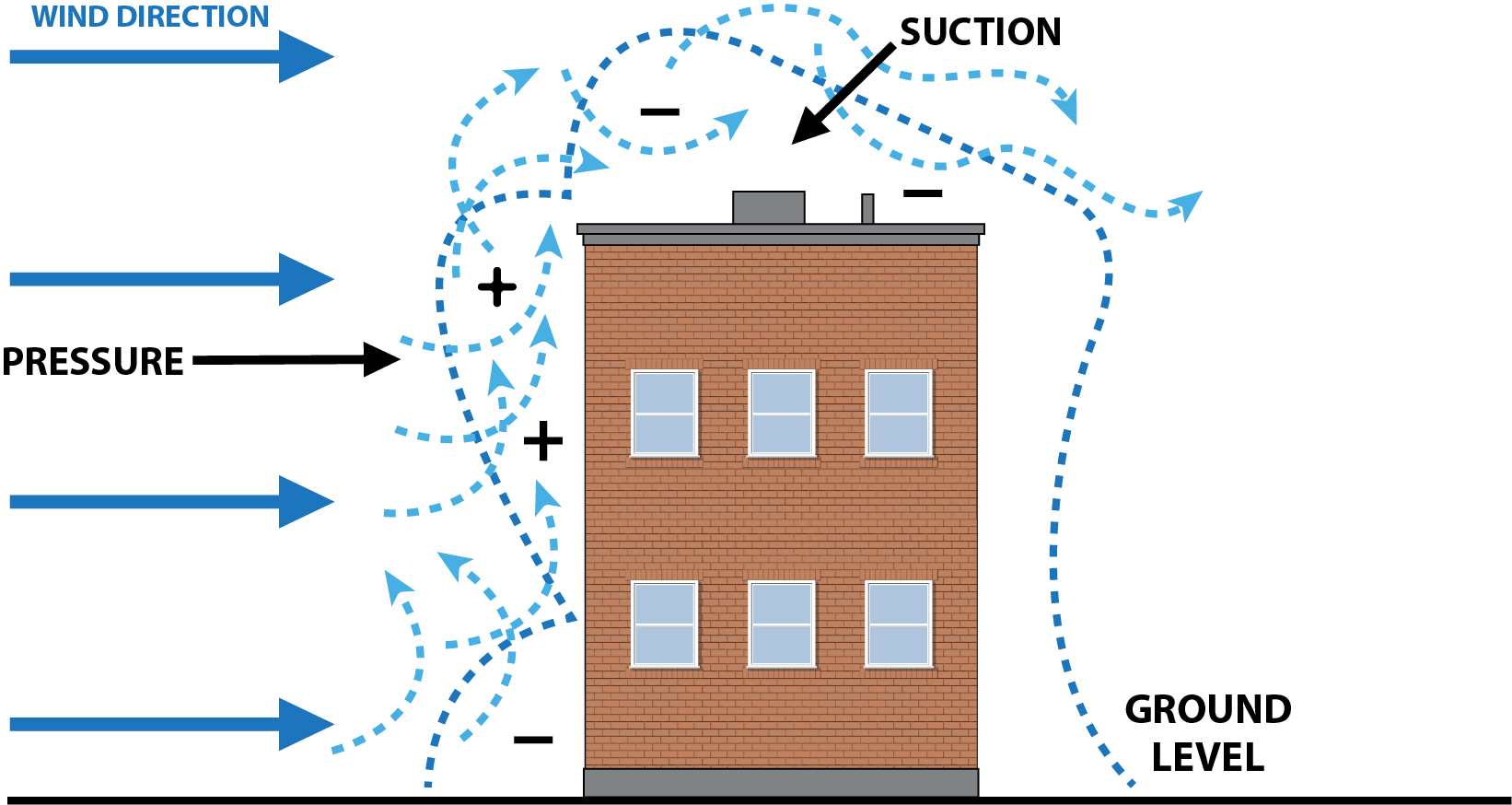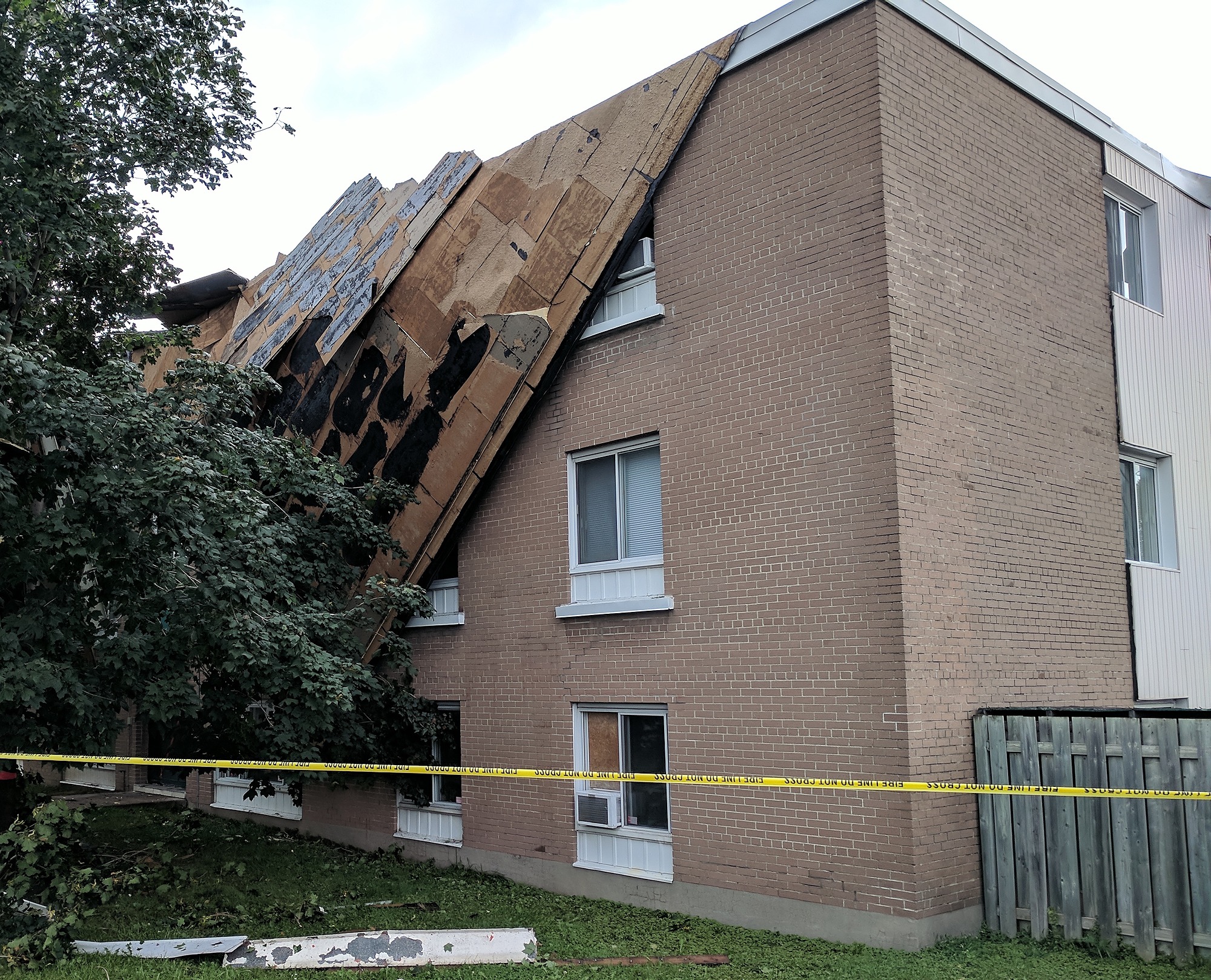Wind
Wind is the most critical environmental factor in assessing fire intensity and the smoke/air track in and out of an enclosure. Wind can generate large air pressure differences that can dominate air and smoke movement throughout a structure when a flow path is present.
Wind can increase the supply of air to a fire, dramatically accelerating fire growth and increasing the likelihood of fire spread to exposures through forced convective heat transfer; direct flame contact; or transport of fire embers toward uninvolved fuels.
Generally, wind blowing against a building surface will produce a higher pressure on the windward side and air movement will be toward the leeward side, where the pressure is lower (see Figure 9). The pressure differences caused by wind on buildings can cause significant structural damage, as evidenced in Figure 10.

